Author: Bernhard Hubmann bernhard.hubmann(at)uni-graz.at
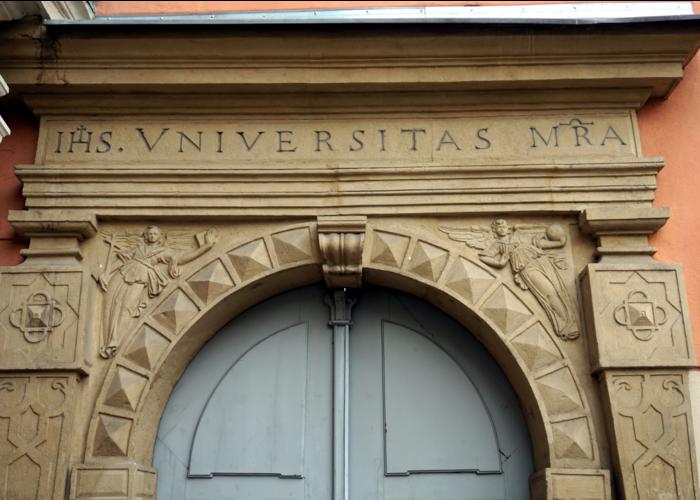
An archival note from May 1761 shows that the subject of mineralogy was already taught at the "old" university (1585-1782) as part of the physics curriculum.1 The first description of Styrian minerals by professors Nikolaus Poda (1723-1798) and Leopold Biwald (1731-1805) dates from this period.2
In 1782, the University of Graz was downgraded to a lyceum, which for the next 45 years was only responsible for the education of priests, lawyers and surgeons.
As a result, the biosciences and geosciences, which were rapidly emerging in Europe at the beginning of the 19th century, did not find a home in Graz on university soil, but in the educational institution of the "Joanneum", founded in 1811 by Archduke Johann (1782-1859). Dazzling personalities among the earth scientists working at the Joanneum were Friedrich Mohs (1773-1839), who established the scratch hardness scale of minerals named after him in Graz, and Mathias Anker (1771-1843), who presented one of the first geological area maps in 1829 with the "Mountain Map of Steyermark".3
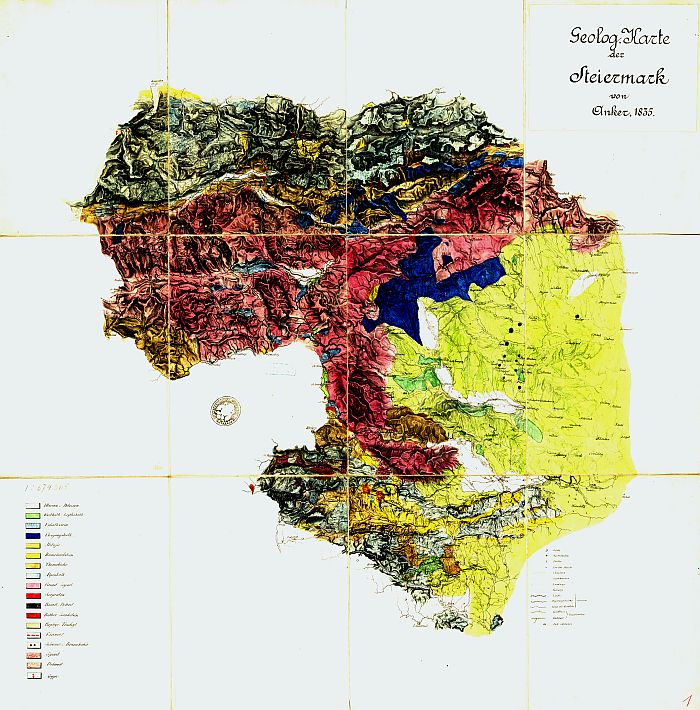
As teaching activities in the natural sciences and technical subjects at the Joanneum became increasingly intensive, the educational establishment, which had been separated from the museum, was elevated to a technical university in 1865, and in 1901 it was granted the right to award doctorates. With the University Organization Act of 1975, Graz University of Technology was renamed "Graz University of Technology"; the following year, the Senate decided to rename it "Archduke Johann University".4
1 Krones, Franz v. (1895): The University of Graz 1886-1895: Its development and current status. - Festschrift for the celebration of the laying of the final stone of the new main building of the University of Graz on June 4, 1895, vi-viii, 1-128, Graz.
2 Flügel, Helmut W. (2006): Nikolaus Poda und die mineralogisch-paläontologische Sammlung der Jesuitenuniversität Graz von 1766- Joannea Mineralogie 3: 25-61, Graz.
3 Hubmann, Bernhard & Moser, Bernd (2004): Erdwissenschafter am Joanneum in Graz zur Zeit Erzherzog Johanns. - Jahrbuch der Geologischen Bundesanstalt 144: 95-99, 1 fig., Vienna.
4 Hubmann, Bernhard (2004): Beginnings and establishment of geological disciplines in Graz - Jahrbuch der Geologischen Bundesanstalt 144: 89-93, 2 figs., Vienna.
Earth sciences at the Karl-Franzens-University between 1861 and 1879
In April 1827, the University of Graz was ceremoniously reopened. It was named "Karl-Franzens-Universität" (KFU) in honor of the founder Archduke Karl II (1540-1590) and the reigning Emperor Franz I (1768-1835). An independent Chair of Earth Sciences for the subject of mineralogy was not established until October 1, 1861 with the appointment of Victor Leopold Ritter von Zepharovich (1830-1890).1
Just two and a half years later, in February 1864, Carl Ferdinand Peters (1825-1881) was appointed full professor of mineralogy and geology. He represented mineralogy and geology at the same time and headed the "mineralogical-geological university cabinet" for the next 12 years.2 In June 1876, the mineralogist Cornelio Doelter (1850-1930) and the geologist Rudolf Hoernes (1850-1912) were appointed associate professors to support the full professor Carl Ferdinand Peters. In the same year, the "Mineralogical-Geological Institute" moved from the premises of the old university to a building on Karmeliterplatz.
Mineralogy and geology between 1879 and 2004
In January 1879, the Mineralogical-Geological Institute split into two independent units for the next 125 years, the "Mineralogical-Lithological" and the "Geological-Palaeontological" Institute, with Rudolf Hoernes and Cornelio Doelter appointed as their directors.1 Both institutes were housed in jointly rented premises in Burggasse before the Geological-Palaeontological Institute moved to the southern wing of the then newly constructed main building on today's university campus in October 1894. The Mineralogical-Petrographical Institute was also to follow, but it was decided to house it in the "Natural Sciences Institute Building" at Universitätsplatz 2, which was built in 1899.
While the Department of Mineralogy is still located at Universitätsplatz 2, the "Institute of Geology and Palaeontology" moved once again in October 1968 to a newly constructed building at Heinrichstraße 26.
During this period, several organizational reforms of the university system took place.2
The following people worked at the two earth science units during this period:
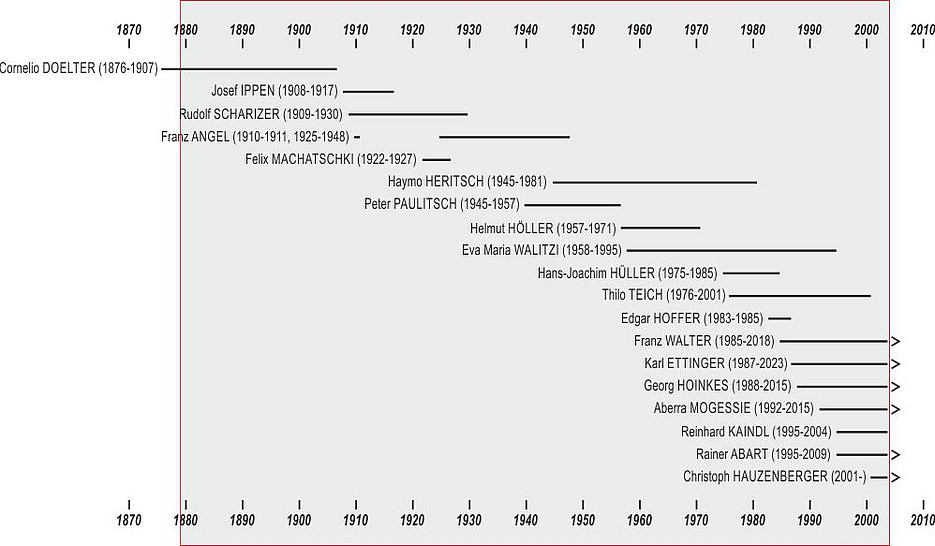
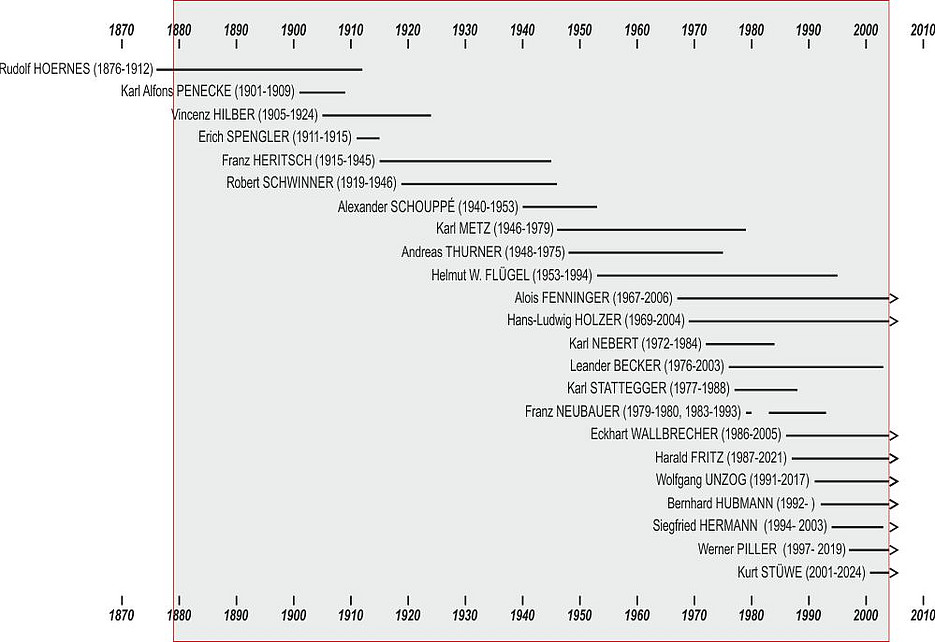
1 Hubmann, Bernhard, Angetter, Daniela & Seidl, Johannes (2017): Graz earth scientists (1812-2016). A bio-bibliographical handbook. - Scripta geo-historica 6: VII + 174 pp., Graz.
Earth sciences from 2004
In spring 2004, the "Institute of Geology and Palaeontology" and the "Institute of Mineralogy and Petrology" were merged to form the "Department of Earth Sciences" as part of the implementation of the Universities Act (UG) 2002. As a consequence of the "NAWI Graz" cooperation between the Karl-Franzens University and the Graz University of Technology, which was also established in 2004, the "NAWI Graz Geozentrum" was founded in December 2015, initially as a virtual cross-university center, with the aim of bringing them together in a joint building.1
Unique in Austria, the NAWI Graz GeoCenter bundles the geoscientific and geotechnical expertise of the four institutes at the site
- Institute of Applied Geosciences (TU Graz, with two departments)
- Institute of Rock Mechanics and Tunnelling (TU Graz)
- Institute of Soil Mechanics, Foundation Engineering and Numerical Geotechnics (TU Graz)
- Department of Earth Sciences (University of Graz, with four disciplines)
in the disciplines
- Mineralogy and Hydrogeochemistry (1)
- Engineering geology (1)
- Rock mechanics and tunnel construction (2)
- Soil mechanics, foundation engineering and numerical geotechnics (3)
- Hydrogeology (4)
- Petrology and Geochemistry (4)
- Geology (4)
- Paleontology and stratigraphy (4)
This intensive integration of the eight disciplines benefits not only research, but also students, who now have additional opportunities to specialize.
The following diagram shows the respective periods of activity of the researchers:
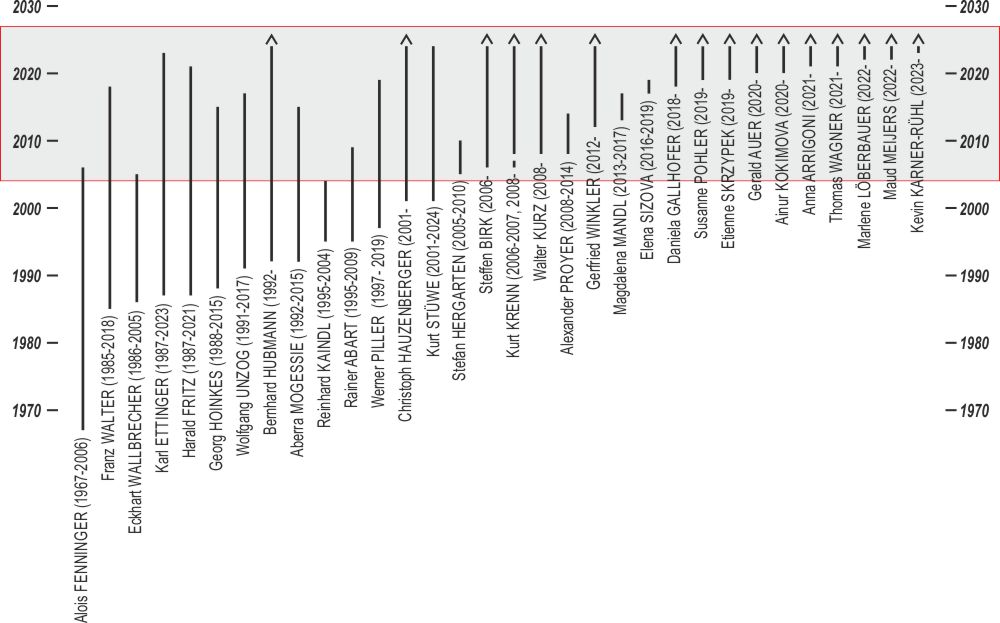
1 Birk, Steffen, Fritz, Harald, Hubmann, Bernhard & Kurz, Walter (2019): The "Geology Institute" at the University of Graz during the years 1997 to 2019: Insights in retrospect - In: Hubmann, B. & Kurz, W. (eds.): Festveranstaltung zur Emeritierung von Werner E. Piller. - Reports of the Geological Survey of Austria 133: 21-30, 2 figs, Vienna.
